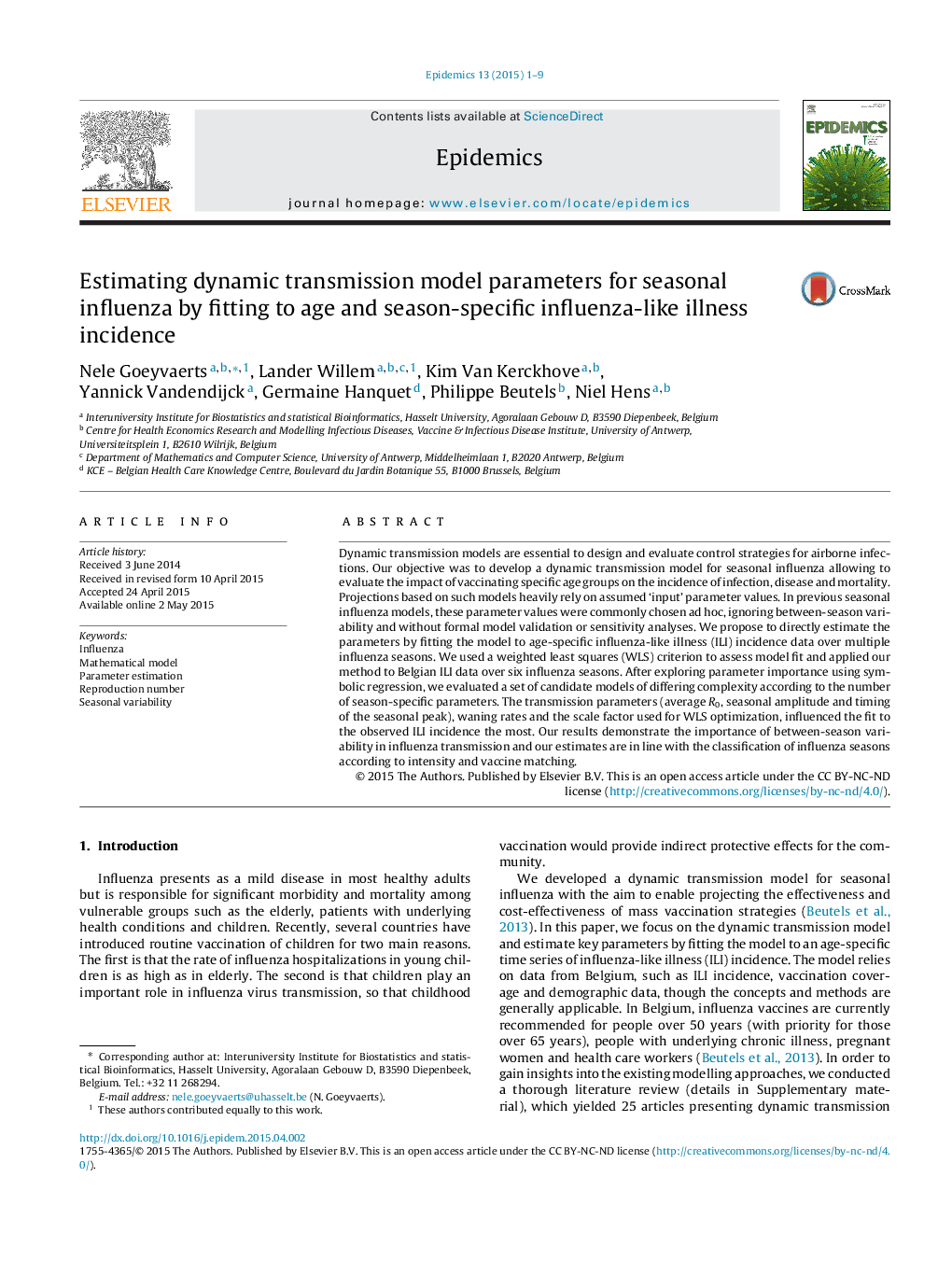| کد مقاله | کد نشریه | سال انتشار | مقاله انگلیسی | نسخه تمام متن |
|---|---|---|---|---|
| 2813539 | 1569434 | 2015 | 9 صفحه PDF | دانلود رایگان |
• We fitted a dynamic transmission model for seasonal influenza to ILI incidence data.
• We modelled across multiple seasons including waning and boosting of immunity.
• Transmission, waning and scale parameters were most influential to the ILI data fit.
• Season-specific parameters were important to capture between-season variability.
• The model allowed evaluating the impact of age-stratified vaccination strategies.
Dynamic transmission models are essential to design and evaluate control strategies for airborne infections. Our objective was to develop a dynamic transmission model for seasonal influenza allowing to evaluate the impact of vaccinating specific age groups on the incidence of infection, disease and mortality. Projections based on such models heavily rely on assumed ‘input’ parameter values. In previous seasonal influenza models, these parameter values were commonly chosen ad hoc, ignoring between-season variability and without formal model validation or sensitivity analyses. We propose to directly estimate the parameters by fitting the model to age-specific influenza-like illness (ILI) incidence data over multiple influenza seasons. We used a weighted least squares (WLS) criterion to assess model fit and applied our method to Belgian ILI data over six influenza seasons. After exploring parameter importance using symbolic regression, we evaluated a set of candidate models of differing complexity according to the number of season-specific parameters. The transmission parameters (average R0, seasonal amplitude and timing of the seasonal peak), waning rates and the scale factor used for WLS optimization, influenced the fit to the observed ILI incidence the most. Our results demonstrate the importance of between-season variability in influenza transmission and our estimates are in line with the classification of influenza seasons according to intensity and vaccine matching.
Journal: Epidemics - Volume 13, December 2015, Pages 1–9
